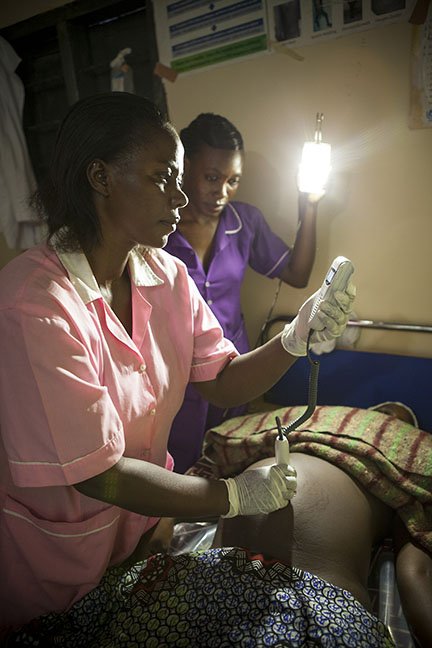Lack of access to modern forms of energy – or energy poverty – has both direct and indirect harmful effects on health and medical care facilities in sub-Saharan Africa.
In fact, more than 30 percent of clinics and hospitals in sub-Saharan Africa, serving approximately 255 million people, are without electricity.Here’s six specific ways lack of electricity can affect patients, doctors and nurses in clinics and hospitals.

1. Doctors struggle to provide clinical services after sunset.
Access to energy services lengthens the work day for those in the medical profession and allows them to see a greater number of patients in a day. When facilities without electric lighting do see patients after dark, they have to depend on paraffin lamps, candles or torches that provide low-quality light, give off harmful fumes and, in some cases, present a fire hazard. These types of lights are also often more expensive per unit of energy than electric lighting.
2. Life-saving operations, examinations and procedures cannot be performed without good lighting.
Conducting medical examinations, not to mention invasive surgeries or childbirth, with poor lighting unsurprisingly poses additional risk to the patient.
3. Vaccines, blood work and medications are not stored in proper conditions.
Vaccines that protect against preventable diseases can lose their effectiveness when they aren’t refrigerated properly. Even when health clinics do have access to power, it is often intermittent, with outages lasting an average of 4.5 hours at a time in Kenya. Indeed, 60 percent of health center refrigerators are thought to have inconsistent power supplies.

4. Small health facilities cannot communicate with specialists or get patient transportation to other facilities in the case of an emergency.
Energy poverty also limits interactions between health care professionals and obstructs the transfer of information and knowledge. Communication technology, such as mobile phones and VHF radios, are necessary to ensure that there is sufficient support during emergencies and enable better treatment decisions by connecting to specialists from referral hospitals.
5. Health care facilities cannot power laboratory equipment such as ultrasound and X-ray machines as well as incubators.
Electricity is especially important in carrying out reliable and rapid diagnostic testing to help prevent medical emergencies before they occur. But even the most routine procedures require medical tools like ultrasounds and X-ray machines that are impossible to use without a reliable power source.
For example, access to electricity has had an astounding impact on child survival rates. The neonatal mortality rate (the probability of a child dying in the first 28 days after birth) decreased from 40 percent to 28 percent per 1000 births in Kenyan health facilities as a result of powering incubators for newborn babies.
6. Poor power supply for lighting, cooking and heating leads to the high use of open indoor fires and kerosene lamps.
Both of the energy sources named above are heavily polluting and toxic and globally contribute to over 3 million deaths, mainly of women and girls. The WHO estimates that indoor pollution from biomass cooking will soon be a bigger killer than malaria and HIV/AIDS combined.
This article was written by Gretchen Knoth in support of ONE.